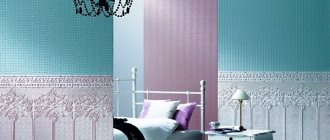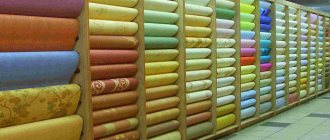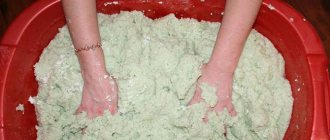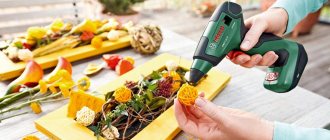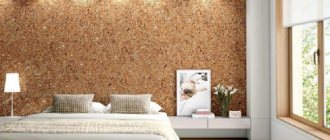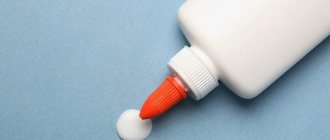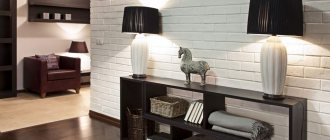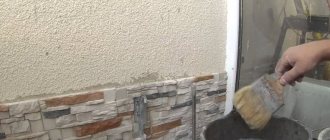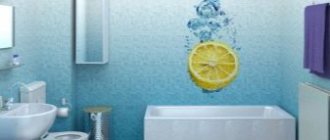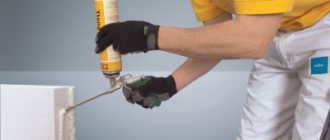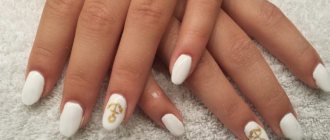Gluing glass wallpaper is the choice of those who do not seek a compromise between design, strength, and safety. Fiberglass-based canvases, unique in their qualities, will help transform any room and will not cause health problems after renovation. Moreover, by purchasing high-quality glass wallpaper from Wellton, Oscar and other famous manufacturers, you can forget for a long time from the labor-intensive and time-consuming pains of repairs, because these glass wallpapers are great for repainting an unlimited number of times! The Lavon trading house offers you to order glass wallpaper in Moscow at the best price. Here you will find a wide range of varieties, including the popular glass wallpaper “Herringbone”, “Rhombus” and other types of fiberglass for any purpose.
What is glass wallpaper?
Fiberglass wallpaper is a finishing material for walls consisting of impregnated fiberglass. The surface has a relief pattern. Fiberglass wallpaper is made from glass blanks that melt under high temperature and the fibers stretch. These are subsequently used to create threads, and then fabric or fiberglass using the weaving method. Later, the surface is coated with impregnation to ensure the stability of the material.
Compound
Fiberglass wallpaper consists of natural materials: soda, clay, limestone, quartz sand. To transform from blanks into fiberglass, only high temperatures are required, reaching 1200 degrees. The basis of the impregnation, which is applied upon completion of the work to ensure the durability of the material, is modified starch.
Specifications
| Name | Meaning |
| Life time | more than 30 years |
| Possibility of coloring | Coloring up to 20 times |
| Standard size, (m.) | 1x25; 1x50 |
| Static electricity | Does not accumulate |
| Degree of vapor permeability | High |
| Fire properties | Eat |
| Minimum density of wallpaper for wall decoration | 100 gsm m. |
Features of glass wallpaper for painting
Fiberglass wallpaper is a finishing material for decorating walls and ceilings. It is made by drawing threads from molten glass and then making fabrics or canvas (non-woven material) using special equipment. To give the material strength, its surface is treated with a composition of modified starch and glue (experts call it impregnation).
Fiberglass wallpaper differs in texture, pattern, color and class (grade).
Texture. The older generation was left with the impression that fiberglass wallpaper was a roll of material with an incomprehensible pattern. Advances in technology have changed this perception. Fiberglass (gossamer) is smooth, fiberglass is textured, with a deep, clear pattern. The first type of wallpaper is used mainly for covering the ceiling, the second is intended for walls.
Fiberglass web.
The use of looms for the production of jacquard fabric in the manufacture of wallpaper made it possible to obtain a deep, varied relief.
Fiberglass fabric with herringbone pattern.
Pattern. The widely known patterns “matting”, “herringbone”, “check” are gradually losing their positions. They are being replaced by “rain”, “drop”, “rhombus”, “parquet”, etc.
Color. According to the idea of technologists and designers, glass wallpaper should be painted after pasting. Therefore, they are mainly sold in white. There are varieties: yellowish or slightly grayish.
Recently, dyed fabrics have appeared that do not require the application of dyes. True, their price is appropriate - more than 10.0 thousand rubles. per roll.
Class. In order not to show accurate data on density, some manufacturers began to use the concept of class (grade) of their products. As a result, all types of fiberglass trellises began to be divided into 3 classes:
- first - there is a variety: premium class;
- second;
- the third is also called economy class.
Types of fiberglass wallpaper
By invoice
Fiberglass wallpaper has two main types of texture, smooth and embossed. Different types of wallpaper can serve different functions.
Smooth
Smooth fiberglass wallpaper is also called gossamer or fiberglass wallpaper. This is due to visual similarity. In addition to the aesthetic function, smooth glass wallpaper also performs a practical one, namely, it is used to strengthen and level walls or ceilings. Smooth glass wallpaper will be a good option for finishing the ceiling; the surface is smooth and even.
Embossed
Another name is traditional glass wallpaper. A material with greater density compared to smooth wallpaper. The surface has a clearly defined relief, forming some kind of ornament or design. This type of fiberglass wallpaper is suitable for final wall decoration.
Gozhka
The type of texture has the name of the fabric, which is distinguished by a unique and recognizable way of weaving threads; visually the surface of the glass wallpaper looks like a sheet of fabric. Weaving can be small, medium and large.
Rhombus
The weaving of the fiberglass fabric forms a diamond-shaped pattern along the entire length of the fabric. The drawing can be with figures of equal or different sizes. Diamonds are also distinguished between large, medium and small. Visually, the wall covering looks like jacquard.
Herringbone
The fiberglass fabric has a zigzag pattern along its entire length. Like other types, the drawing can have different sizes. Small ornaments are suitable for decorating small rooms, such as a corridor.
To order
Today, in addition to the usual patterns, glass wallpapers are also made with other patterns; in production, you can also make an individual order for a unique weaving according to an individual sketch.
By quality
The quality of glass wallpaper depends on its density; the higher it is, the stronger the material and the longer its service life.
| 1 class | The most durable coating of this type of wallpaper. Service life on average 30 years. The density of glass wallpaper is more than 100 grams per sq.m. The canvas is ready for repeated repainting, without loss of external qualities. |
| 2nd grade | The density of fiberglass fabric is less than 100 grams per sq.m. Fiberglass wallpaper has a shorter service life. A good option for budget renovation. When re-dyed, the pattern becomes clogged and the texture becomes less noticeable. |
| Economy | Manufacturing defects are common. Material with low density and, accordingly, quality. |
By color
For painting
Paintable fiberglass wallpaper is made in a neutral color, most often white or beige. This background allows you to apply any shade to the surface without distorting it.
Colored
Colored fiberglass wallpaper is not intended for painting; paint is added during production. This type of finishing is suitable for a room that does not require regular updating.
The photo shows a dining room in a classic style. The finishing is made with glass wallpaper in orange tones.
By water resistance
During production, the degree of water resistance of fiberglass wallpaper is indicated on rolls or packaging. The designation is in the form of waves. The more waves, the higher the water resistance of the material.
1 wave
Fiberglass wallpaper does not have good contact with water. The surface can be washed with a slightly damp soft cloth or suede.
2 waves
They indicate the average degree of moisture resistance of fiberglass fabric; the material tolerates contact with water better. The surface can be washed with a cloth or soft sponge and water or soap solution.
3 waves
The three-wave icon means a high degree of moisture resistance of the glass wallpaper. When cleaning, non-abrasive detergents can be used.
Production of glass wallpaper
Despite its decent lifespan, the composition of fiberglass wallpaper has not changed, only the technology for its production has been slightly improved. It includes:
- lime;
- dolomite;
- sodium carbonate (soda known to everyone);
- quartz sand.
All four components of glass wallpaper are natural raw materials. The principle of making wallpaper is quite simple: thin threads - a kind of yarn - are drawn from special glass at a temperature of 1200 degrees Celsius (melting point). Then the material itself is woven from it and rolled into a roll. If it is just a painting fiberglass “cobweb”, then the usual fabric is woven. If it is fiberglass wallpaper, then the process produces textured patterns or decor in wicker or plain weave.
USEFUL INFORMATION: Soundproofing and sound-absorbing panels for walls
Advantages and disadvantages
Like any material, fiberglass wallpaper has a number of advantages and disadvantages over other finishing materials. Taking into account all the nuances, you can easily decide on the relevance of this type of wallpaper for a particular room.
| pros | Minuses |
| High fire-fighting properties | High price |
| Consists of environmentally friendly materials and is therefore safe for health | Only latex or acrylic paint is suitable for painting. |
| High strength fiberglass coating, due to which the fabric has reinforcing properties | A special glue is required, the price of which is also higher than other adhesives. |
| Anti-vandal qualities | Fiberglass wallpaper is difficult to remove, since the impregnation is firmly bonded to the glue. |
| Long service life | It is mandatory to comply with safety rules when working, namely the presence of a respirator. |
| Glass wallpaper is resistant to changes in humidity and temperature, as well as sunlight. | |
| Sound insulation increases | |
| The walls are breathing |
The photo shows an infographic about the advantages of glass wallpaper
Fiberglass wallpaper (glass wallpaper)
The online store "WALL.COM" sells glass wallpaper and durable finishing fiberglass.
The catalog presents products from the best European brands - VITRULAN, Brattendorf, Wellton. As a direct distributor, our company guarantees the originality of all fiberglass finishing materials and sells them at a customer-oriented price. We supply glass wallpaper in securely, hermetically sealed rolls - in bulk and in small quantities. Premium glass fabric materials from our store are produced using high-tech equipment from health-safe, non-toxic raw materials and meet strict European quality criteria. With our wallpaper you can create a stylish, eco-friendly interior in a minimum amount of time, which, taking into account all costs, will be inexpensive.
How to properly glue to walls?
Which glue to choose?
For fiberglass wallpaper, you need to use special glue; liquids are not suitable for ordinary paper wallpaper, they will simply be ineffective, since they will not withstand the weight of the fiberglass wallpaper. Today, construction stores offer a large selection of adhesives designed for gluing glass wallpaper from a number of manufacturers, such as Oscar, Quelyd or Kleo. Their composition takes into account the features of fiberglass material; the mixtures can be purchased in ready-made or dry form.
Which surface is best to glue on?
Fiberglass wallpaper must be glued to the prepared surface. To do this, it is necessary to remove the old finish and level the walls using putty; minor irregularities do not need to be removed. The walls are sanded and covered with primer. After this, the surface is ready for finishing.
How long does it take to dry?
Fiberglass wallpaper dries on average in a day or two. In this case, the room temperature should be from 10 to 25 degrees. It is also necessary to exclude the possibility of drafts or bright sunlight.
Preparing the walls
Before you start gluing the fiberglass material, you need to prepare the working surface.
- Remove old finish
- level the surface using putty,
- seal drywall joints or small cracks with paint mesh,
- sand,
- prime with a roller,
- After complete drying, the walls are ready for gluing glass wallpaper.
Gluing technology
Before you start work, you need to apply markings and prepare the glue. The markings will help you stick the wallpaper evenly without overhanging the side. To do this, draw a line perpendicular to the ceiling, which is measured using a plumb line or level. The glue will be ready 15 minutes after mixing.
- It is necessary to adhere to safety precautions, namely, wear safety glasses and gloves.
- The wallpaper begins to stick from the door. The glue is applied to the wall, extending beyond the edges of the mark.
- A sheet of glass wallpaper is applied from top to bottom and smoothed with a plastic spatula.
- Using the same principle, the next sheet is glued end-to-end.
- The joints are pressed and smoothed last.
- After 24-48 hours the wallpaper will dry and be ready for painting if necessary.
Video
Materials and tools
Decorating walls or ceilings with fiberglass wallpaper requires the purchase of:
- several rolls of glass wallpaper;
- special glue (“Oscar”, “Kleo”, “Metylan”);
Glue "Oscar".
- primers;
- acrylic or latex paint.
Tools and equipment you will need:
- stepladder or strong table;
- a screwdriver with a mixing attachment for stirring dry glue (ready-to-use adhesives can also be found on sale);
- container for glue and water;
- cuvette - needed for primer, glue and paint;
- brushes for applying primer, glue and paint;
- paint rollers with a telescopic handle - will be required when priming and painting walls (ceilings);
- plumb line;
- pencil;
- roulette;
- scissors;
- knife with removable blade;
- wallpaper spatula;
Wallpaper spatula.
- sponge;
- rags (rags).
Features of use on the ceiling
Gluing glass wallpaper is carried out according to the same principle as on walls. Self-adhesive tape will help you check the strength of old plaster on the ceiling.
- The direction starts from the window to the opposite wall.
- Glue is used only specifically for glass wallpaper; any other glue will not withstand their weight.
- The glue is applied only to the ceiling.
- You need to act sequentially, the next strip of glue is spread after the sheet of wallpaper is glued.
- The gluing is done end-to-end, with an overlap on the walls.
- The excess is cut off after drying.
How to paint correctly?
Which paint to choose?
For painting fiberglass coverings, water-dispersion paint is best suited. The choice is due to the absence of toxic substances, quick drying and the absence of unpleasant odors. Depending on the type of room, you can choose acrylic, styrene-butadiene or latex-based paint.
Step-by-step painting instructions
Painting glass wallpaper has a simple procedure. However, its strict adherence helps to achieve an ideal result.
- Preparing the room and tools. Cover the floor, radiators and baseboards with film or newspaper.
- The walls are primed, after which you need to wait until completely dry,
- the corners of the room are painted with a brush,
- walls are painted using a roller,
- To ensure smooth application, avoid interruptions. Paint applied to an already dried surface will be visible at the border.
- The second layer is applied after 12 hours.
Video
How to choose glass wallpaper?
Fiberglass wallpaper must be selected according to certain criteria, namely pattern, manufacturer, class and composition.
- The higher the density of the fiberglass material, the stronger the material and the longer the service life,
- fiberglass wallpaper of lower density is not so durable, but has a low cost,
- the pattern is selected depending on personal preferences, it is also possible to make an individual order for a unique pattern,
- the larger the drawing, the more times it can be covered with paint,
- the ideal composition is a ratio of 70% glass and 30% impregnation,
- The edges of the roll should be smooth and the weaving neat.
Popular manufacturers and prices
A well-known brand can guarantee quality. Among them are many world-famous companies producing fiberglass wallpaper:
- "Vitrulan";
- "Tassoglas";
- "Nortex";
- "Welton"
- "Oscar"
- "Bau Master";
- "X - Glass";
- "Saint-Gobain Novelio";
- "Waltex"
- "Veterman"
- "Mermet" etc.
"Vitrulan". Fiberglass wallpaper under the Vitrulan trademark is produced by the German concern Vitrulan Textile GMbH, the largest manufacturer in Europe. The company's technologists are constantly working to create a variety of lines of trellises, as a result of which they are distinguished by their smoothness, types of patterns, softness and color. And all this with quality that is commonly called German. The base price per 1 m2 ranges from 170-468 rubles.
"Tassoglas". The product of an American company with its factories in the USA, Europe and China. It achieved fame thanks to the widest range of surface textures among similar productions. Practical and high-quality fiberglass is used not only for finishing offices and organizations, but also for covering walls and ceilings in living rooms. Rarely found on sale. Costs from 82 to 450 rubles/m2, depending on density.
"Nortex". "Nortex" is a trademark of a Russian company. Production is located in China. Takes into account the requests of all buyer groups. Therefore, on the market you can find both premium-class wallpaper with a high density of 200 g/m2, and economy-class wallpaper with a density of up to 100 g/m2. They are distinguished by durability, a guarantee of over 30 years and a variety of patterns. The price range is significant. You can buy it for 66 rubles/m2 (“Medium matting”), and for 168 rubles/m2 (“Rain”).
Welton. A Swedish brand with established production in many countries of the world: Germany, Russia, Czech Republic, Finland and China. All production facilities produce high quality products with stylish design. The cost of 1 m2 is about 208 rubles.
"Oscar". Subsidiary, but with more affordable prices and good quality - 69-107 rubles/m2.
"Bau Master" China. They are distinguished by affordable prices and good quality. The cheapest wallpaper can be bought for around 33 rubles/m2, the most expensive - 130 rubles/m2.
"X - Glass." Russian manufacturer with a wide range of glass fiber and canvas in the middle price range. For example, fiberglass fabric can be found on sale for 47-80 rubles/m2.
If we consider specific wallpaper models, their rating for mid-2022 is as follows:
1. "Vitrulan Acoustic 904 Labyrinth". The wallpaper is unique in that a layer of heat and sound insulation is applied to the reverse side (reduces noise by about 2 times). Their density is 610 g/cm2, dimensions are 10.4 x 0.96 m, price is 20,866 rubles. per roll.
2. “Vitrulan Aqua Plus 604 phantasy microcrepe.” The highlight is that there is no need to select a design or buy glue - it is already applied to the back side. Density - 200 g/m2, dimensions - 1 x 25 m, price - 9400 rubles. per roll.
3. “Brattendorf B021 Rain.” German quality products costing about 9,360 rubles.
4. "Novelio Checkers 1023". Czech glass wallpaper 25 m long, density 195 g/m2, priced at 4,078 rubles per roll.
5. "X - Glass Gold." Finishing finishing material with a price of 3200 rubles. per roll.
Photo ideas in the interior
For the bathroom
Fiberglass wallpaper will be a good finishing option for a bathroom. They are not afraid of moisture and will not allow fungus and mold to appear.
The photo shows a bright bathroom. The decoration is made with glass fabric wallpaper in turquoise color.
For greater strength and reliability, the fiberglass fabric is coated with washable paint.
The photo shows a spacious bathroom decorated with fiberglass wallpaper in blue.
For kitchen
A big advantage can be considered the high fire resistance of glass wallpaper.
The photo shows a modern kitchen decorated with glass wallpaper in neutral colors.
In the kitchen, this fact is very relevant. At high temperatures, fiberglass sheets do not emit harmful substances. In addition, replacing glass wallpaper will cost less and the work will be easier. Suitable for finishing the dining area.
In the toilet
In the toilet, as well as in the bathroom, it is important to minimize the possibility of mold and mildew. Fiberglass wallpaper will help with this; they will be a good alternative to tiles. In addition, their cost is lower than tiles.
In the hall
The strength of the fiberglass material will eliminate mechanical damage to the surface, and the waterproof coating is easy to care for and keep clean.
On the balcony
Fiberglass wallpaper is not afraid of changes in temperature and humidity; it will be a practical solution for finishing a glazed balcony or loggia.
Advantages of the material
Glass wallpaper has such impressive characteristics that this allows them to successfully compete with their paper and non-woven counterparts.
Both the glass melted during the production process and the impregnation are made from natural, environmentally friendly substances. Fiberglass wallpaper does not cause allergies, with them you will not know what dust mites, fungi or mold are, since the fiber is perfectly smooth and there is no nutrient medium. For people with problems with the respiratory system or a tendency to allergic reactions, glass wallpaper will be the optimal finish. They are approved for use in all residential premises, including children's rooms; in European countries they are used to cover the walls of orphanages, hospitals, government agencies and leisure centers.
Despite its glass origin, fiberglass fabric is capable of permeable air; being woven or molded from individual fibers, it is vapor permeable and does not clog walls like synthetic counterparts. To maintain this property, for fiberglass wallpaper you need to select paint with similar necessary parameters.
Another advantage is fire resistance; the fiberglass coating does not support combustion and even when melted does not release poison into the air. An equally useful quality is resistance to water: the surface can be washed, and even if a large amount of liquid gets on it, the neighbors flood it, or due to carelessness the container nearby tips over, no damage, everything will remain smooth and beautiful. Fiberglass wallpapers perform well in damp rooms - they are used to cover bathrooms and indoor swimming pools. This is what Fokys from Moscow is going to do.
Fokys FORUMHOUSE user
Small bathroom in a wood frame kitchen. After removing the old painted oilcloth, it was discovered that two walls and the ceiling were covered with ancient “dry plaster” - something like modern drywall. Since the material is dry and not rotten, it was decided to glue glass wallpaper on it, as well as on the walls that will be made of gypsum fiber board, and then paint them.
One of the necessary advantages and benefits of fiberglass material is the strength of the coating - it is resistant to mechanical stress, and it is even difficult to damage it on purpose. When there are small children in the house who love to experiment with sharp objects, or pets who are partial to the walls, glass wallpaper will help maintain a decent appearance for a long time without the need for regular repairs.
Tips for caring and washing wallpaper
The glass wallpaper material itself is quite durable and can withstand various cleaning methods. The method must be selected depending on the paint covering the surface.
- Non-abrasive detergents can be used to remove stains from the glass cloth surface.
- depending on the moisture resistance of the paint, you can use soft suede or a brush,
- For preventive maintenance, it is enough to remove dust with a dry soft brush.
Advantages and disadvantages of glass wallpaper
The popularity of fiberglass wallpaper in our country is growing every year, thanks to its very attractive qualities:
- environmental cleanliness and health safety;
- very durable material, it is almost impossible to accidentally tear it or damage the surface;
- absolutely fire-resistant, does not burn even in a fire;
- breathing;
- does not rot, does not mold, inhibits the development of fungus;
- it can be painted and repainted;
- easy to clean with cleaning products and a brush;
- properly glued, can withstand use for more than 30 years.
A finishing coating with such characteristics is perfect for office premises and public places with a large number of visitors: shops and supermarkets, hotels, inns and even museums. However, for every barrel of honey there is always a fly in the ointment. And the material we are considering is no exception. Or rather, some of the advantages of its use are also disadvantages:
- if the apartment owner gets tired of the decor pattern and decides to change it, he will have to work hard, given the strength of the product;
- Having familiarized yourself with the manufacturing process of the material, it is not difficult to guess that its cost is much higher than the cost of paper wallpaper;
- the number of patterns is actually not as large as we would like;
- a pattern with a small relief can be completely hidden under several layers of paint.
